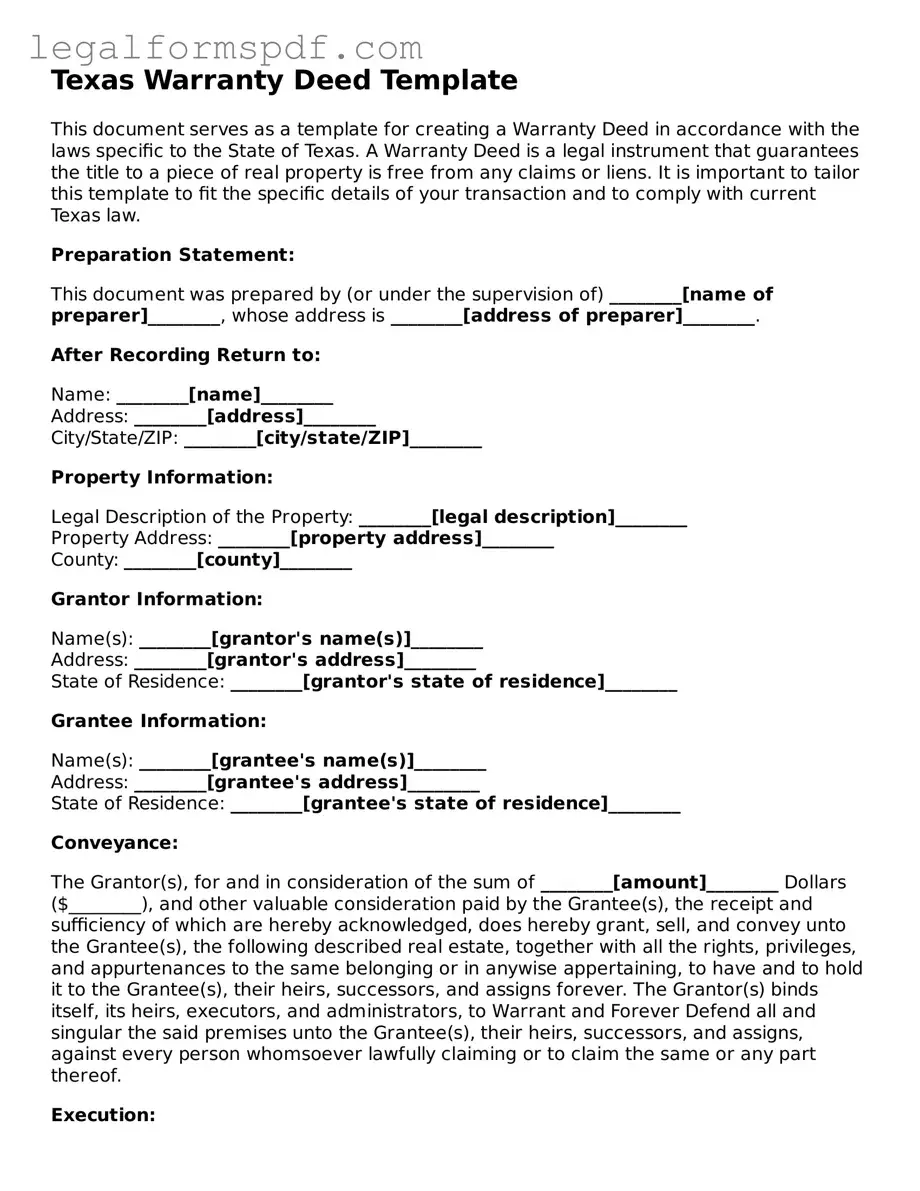Texas Warranty Deed Template
This document serves as a template for creating a Warranty Deed in accordance with the laws specific to the State of Texas. A Warranty Deed is a legal instrument that guarantees the title to a piece of real property is free from any claims or liens. It is important to tailor this template to fit the specific details of your transaction and to comply with current Texas law.
Preparation Statement:
This document was prepared by (or under the supervision of) ________[name of preparer]________, whose address is ________[address of preparer]________.
After Recording Return to:
Name: ________[name]________
Address: ________[address]________
City/State/ZIP: ________[city/state/ZIP]________
Property Information:
Legal Description of the Property: ________[legal description]________
Property Address: ________[property address]________
County: ________[county]________
Grantor Information:
Name(s): ________[grantor's name(s)]________
Address: ________[grantor's address]________
State of Residence: ________[grantor's state of residence]________
Grantee Information:
Name(s): ________[grantee's name(s)]________
Address: ________[grantee's address]________
State of Residence: ________[grantee's state of residence]________
Conveyance:
The Grantor(s), for and in consideration of the sum of ________[amount]________ Dollars ($________), and other valuable consideration paid by the Grantee(s), the receipt and sufficiency of which are hereby acknowledged, does hereby grant, sell, and convey unto the Grantee(s), the following described real estate, together with all the rights, privileges, and appurtenances to the same belonging or in anywise appertaining, to have and to hold it to the Grantee(s), their heirs, successors, and assigns forever. The Grantor(s) binds itself, its heirs, executors, and administrators, to Warrant and Forever Defend all and singular the said premises unto the Grantee(s), their heirs, successors, and assigns, against every person whomsoever lawfully claiming or to claim the same or any part thereof.
Execution:
IN WITNESS WHEREOF, the Grantor has signed and sealed this deed, on the date of ________[date]________.
Grantor's Signature: ________[grantor's signature]________
Printed Name: ________[grantor's printed name]________
State of Texas
County of ________[county]________
This document was acknowledged before me on ________[date of acknowledgment]________ by ________[name(s) of person(s)]________.
Notary's Signature: ________[notary's signature]________
Printed Name: ________[notary's printed name]________
My commission expires: ________[commission expiration date]________
